16+ SAMPLE Quality Assurance Business Plan
-
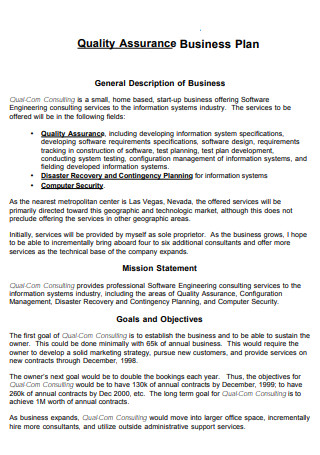
Quality Assurance Business Plan
download now -
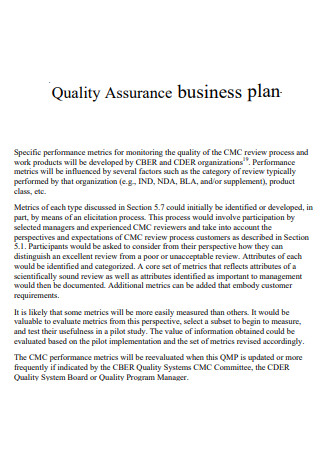
Sample Quality Assurance Business Plan
download now -
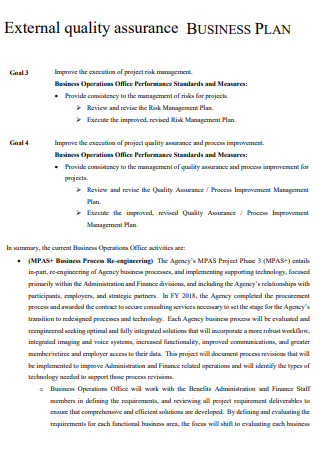
External Quality Assurance Business Plan
download now -
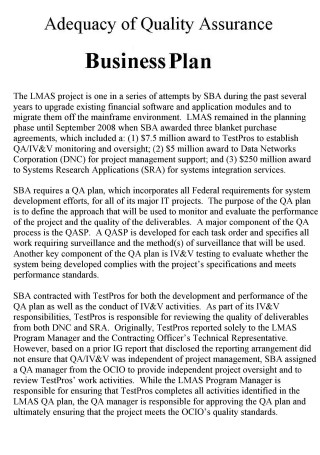
Adequacy Quality Assurance Business Plan
download now -
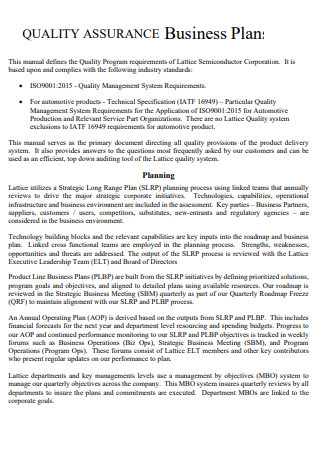
Simple Quality Assurance Business Plan
download now -
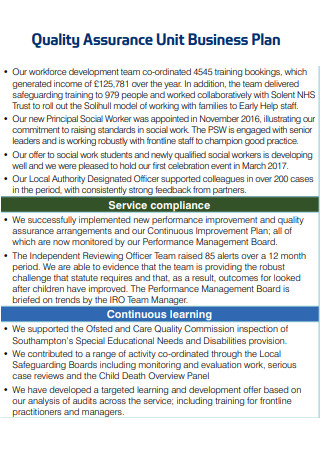
Quality Assurance Unit Business Plan
download now -
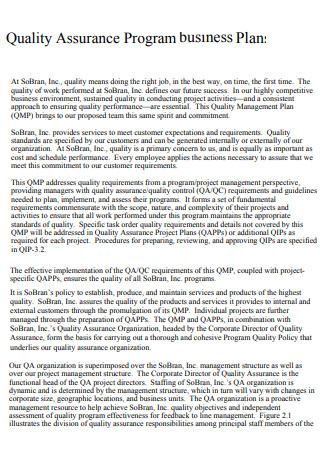
Quality Assurance Program Business Plan
download now -
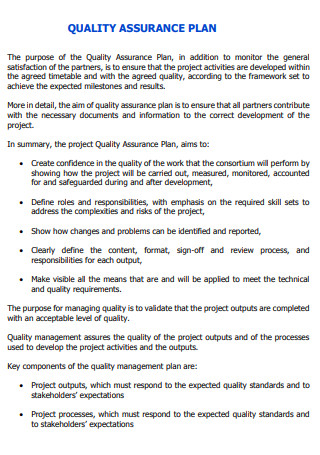
Quality Assurance Approach Business Plan
download now -
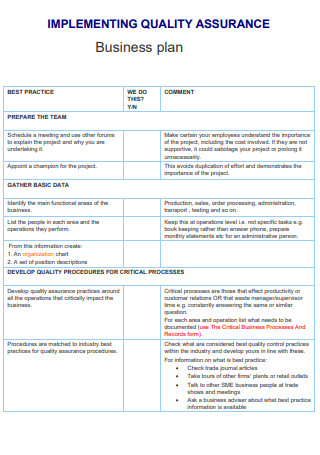
Implementing Quality Assurance Business Plan
download now -
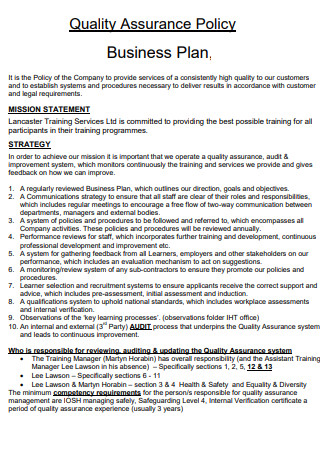
Quality Assurance Policy Business Plan
download now -
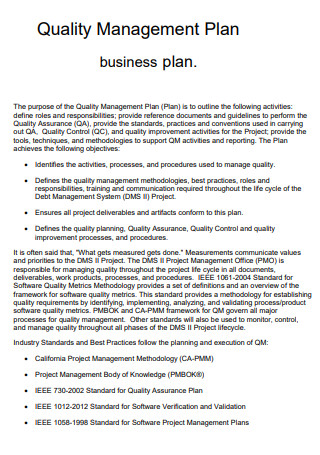
Quality Assurance Business Plan Example
download now -
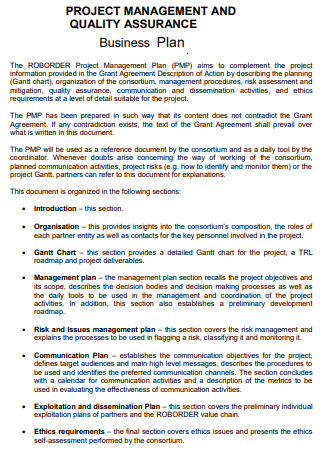
Project Management Quality Assurance Business Plan
download now -
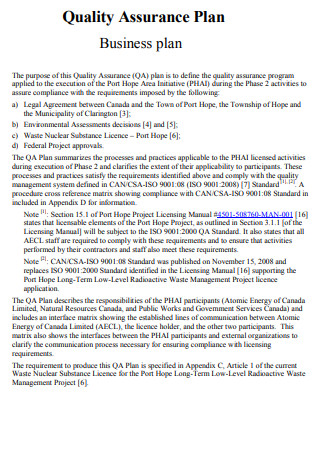
Basic Quality Assurance Business Plan
download now -
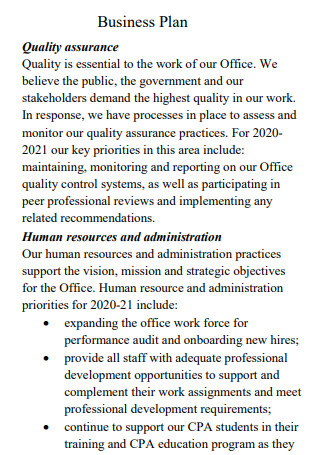
Proffesional Quality Assurance Business Plan
download now -
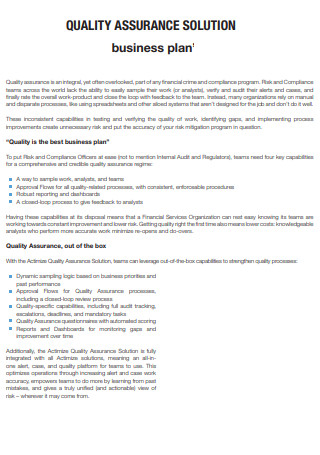
Quality Assurance Solution Business Plan
download now -
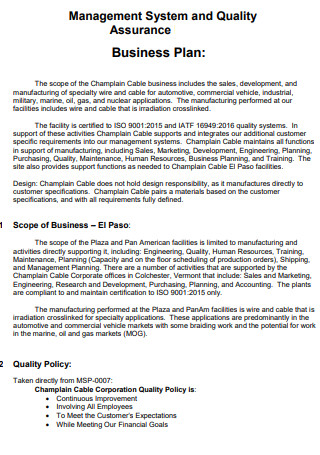
Management System and Quality Assurance Business Plan
download now -

Quality Assurance Integrated Business Plan
download now
Quality Assurance Business Plan
16+ SAMPLE Quality Assurance Business Plan
What Is a Quality Assurance Business Plan?
What Is the Importance of Quality Assurance Business Plan?
What Are the Quality Assurance Activities?
What Are Some Important Outlines in a Quality Assurance Business Plan?
Elements of a Quality Assurance Business Plan
How to Write an Organized Quality Assurance Business Plan
FAQs
What are the different quality assurance certifications?
What is the difference between quality assurance (QA) and quality control (QC)?
What are quality assurance standards?
What Is a Quality Assurance Business Plan?
A business plan for quality assurance is a key component of any project. The helps you to agree with the client on a set of quality objectives. Simultaneously, it is a document that serves as a guide for the project team in order to deliver the highest quality project possible. It is a collection of documented tasks that must be completed in order to ensure that the output project meets the requirements of the clients. As implied by the term, it is intended to ensure that the project is of the highest quality and completed within the specified date. Additionally, the plan assists in monitoring and managing the level of quality to ensure that all levels of the established quality targets are met. The quality assurance plan’s primary objective is to coordinate and enable the development of activities inside each process that will assist in ensuring the correct output is supplied to clients. In this manner, you can be certain that the output you offer meets the high standards set by your client.
Other templates are available on our website, and you can use them whenever you need them. They are as follows: business proposal, business plan outline, annual business plan, software quality assurance, master quality assurance plan, business sales plan, laboratory quality assurance plan, data quality assurance, business plan outline, sales management, and other similar templates are available. This post will not only provide you with templates but will also provide you with important information that you need to know in order to complete your template.
What Is the Importance of Quality Assurance Business Plan?
Because the plan enables you to prevent costly errors in terms of project quality, it is a vital component of the overall project. It will assist you in avoiding quality errors that may cause your clients to lose confidence in your ability to complete a job. In summary, a project quality assurance plan can help you maintain your industry’s reputation as a professional. In this situation, you can deliver a high-quality product while still meeting your deadline. And, because the plan outlines the activities necessary to ensure the output’s quality, it is a critical document that will steer your team toward obtaining the ideal form of your alleged deliverable. In this manner, you are unable to deliver an output that falls short of what your clients want. This will not only protect your professional reputation but will also ensure that you stay on pace to complete your job. Additionally, you will set objectives, roles, and responsibilities, as well as coordinate with other plans, as well as outline tasks and the timeline. The tasks associated with completing the plan are distributed evenly among your team members. It will undoubtedly simplify chores and enable everyone engaged to focus on a specific task, ensuring that the best tactics and skills are employed to finish the project. As a result, you may concentrate on checking at the activity level, rather than checking the finished product and beginning over if it falls short of the expected quality. It is a comprehensive and rational method of assuring the output’s quality.
What Are the Quality Assurance Activities?
In this sense, quality assurance activities are actions made to ensure that standard procedures are followed and the product meets expectations. It ensures clear and achievable criteria while also evaluating and monitoring product conformity. With this in mind, auditing is a critical approach for product and process review. The defined activities also ensure that the production processes are rigorously followed to ensure that the output matches the desired outcome. Similarly, the audit report and management ensure that results and development recommendations are presented in accordance with standards and/or processes. Overall, QAA ensures:
- Quality plans, standards, and procedures are implemented and adhered to across all operational and manufacturing processes
- Configuration control is routinely maintained during important periods of testing, acceptance, and delivery
- An authentication process is established when a series of inspections demonstrate the performance needed by the standard or contractual specification
- Technical reviews, inspections, and walk-throughs are conducted in order to conduct verification and validation operations
- Formal testing is conducted by strictly adhering to the plans and processes and requirements are complete, testable, and express themselves effectively.
What Are Some Important Outlines in a Quality Assurance Business Plan?
A quality assurance business plan is a critical component of the manufacturing process. That is why you should plan it meticulously to ensure that your business lives up to its promise of providing only the highest quality items and services to customers. To assist you with this effort, we’ve created an outline that will guide you through the process of creating the highest-quality material possible for your Quality assurance business plan.
1. Define Objectives and Goals
The first duty is to define your QA plan’s short- and long-term goals, as well as its objectives. This step requires you to articulate clearly the present market threats, the company’s shortcomings, and the overall corrective action plan. The definitions of these components are critical because they guide stakeholders toward effective oversight of roles and obligations. Apart from that, they provide a more full picture of the tasks required to accomplish the project.
2. Create an Audit Plan
After identifying the audit’s objectives and goals, you must create an audit plan. This stage requires you to conduct research on the applicable criteria by consulting the state rules for your company’s location as well as your company’s quality policy. The plan will ascertain whether manufacturing techniques, output quality standards, and service measures adhere to the specification. If feasible, include the auditors’ legal names.
3. Recognize Delivery Methods
Once the audit plan is complete, begin identifying the techniques used to manufacture and perform your products and services. The primary goal is to determine whether or not your practices are current and efficient, given how quickly the market changes. These aspects will also play a significant role in the subsequent parts.
4. Evaluate Deliverables
Assess your deliverables using the information gathered in the preceding section. To assist you with this, we strongly recommend that you engage with customers by conducting a customer satisfaction survey. If the deliverables fall short of the customer’s expectations, this indicates that your practices are incompatible with your objectives. For service providers, a B2B customer survey is a more appropriate data collection technique.
5. Enhance Consistently
Once everything is in place, you can suggest ways to enhance the quality of your products and services. There are numerous viable strategies for accomplishing this. Additionally, industry reports are a few excellent sources to consult.
Elements of a Quality Assurance Business Plan
Implementing the appropriate quality assurance procedure necessitates some preliminary research and strategic planning. To begin, you must recognize that it is distinct from quality control (QC). A quality assurance business plan is a lengthy procedure that must be applied throughout the organization, encompassing all operations that contribute to production. On the other hand, quality control is a subset of quality management that is concerned with ensuring the continued quality of products or services through the identification of flaws. The quality assurance business plan is concerned with preventing faults at all stages of manufacturing in order to maintain the end product’s quality.
How to Write an Organized Quality Assurance Business Plan
A quality assurance business plan describes how a firm can manufacture or perform goods and services that meet customer satisfaction standards. A list of tasks, timetables, techniques, and budgets is part of the documentation process. Aside from achieving client expectations, the approach has other benefits.
Step 1: Make a Word Document
A quality assurance plan must be organized. Create an assurance strategy by opening a new word document in MS Word, Pages, Google Docs, etc. After opening the file, write the plan’s title on the cover page. Put the title in the document’s middle and the company name underneath it.
Step 2: Introduction
Write an introduction to the plan on the next blank page of the quality report. You must provide details such as the scope, purpose, and any reference materials in this section. Include a brief history of the project’s subject, challenges, and findings from past investigations.
Step 3: Mention the Responsibilities and Roles
Provide a description of the important roles and duties, audit and review schedules, quality evaluation, and preventative and corrective actions to be done after the introduction. Tables can be used to make the material appear well-organized.
Step 4: A Summary of the Quality
Now, enter data for the quality overview. It is necessary to specify the quality targets, the sampling procedure, and the measurement procedures. Additionally, the frequency with which these measurements will be made should be specified. If any hazards have been discovered, they should be included in the report along with preventive and corrective actions.
Step 5: Publish and Save
After examining all of the above elements, the final step would be to save them in the plan example template. Once saved, you can print or distribute this material with people in control digitally.
Ensuring high-quality products and services is crucial to long-term business success. If you want the most value-driven quality assurance process possible, don’t omit any of these steps. A well-planned quality assurance strategy can save you time and money. Recalls and refunds can be avoided by avoiding product or service defects. This saves your company money. The quality assurance business plan system also ensures that your company’s intermediate processes run smoothly and minimize risks. It saves time and ensures the timely delivery.
FAQs
What are the different quality assurance certifications?
There are several certifications available in every field to ensure quality. Most businesses in the software development sector recognize ISO 9000, CMMI, and TMM (TMM).
What is the difference between quality assurance (QA) and quality control (QC)?
Quality assurance (QA) tries to prevent problems while quality control (QC) aims to detect them.
What are quality assurance standards?
Quality assurance standards are a set of metrics that organizations throughout the world use to demonstrate their commitment to providing quality products and services. They were created to fulfill customer needs.
Quality assurance is the most critical procedure for organizations because it enables them to maintain a consistent level of quality in their products or services by monitoring each stage of production and delivery. Quality assurance is critical for any organization to maintain success and differentiate its products or services from the competitors. They must, however, establish a definite assurance procedure that is consistent with their quality objectives and meets the expectations of their clients. Having the most appropriate processes enables them to avoid costly risks and reliably produce high-quality products on time.
